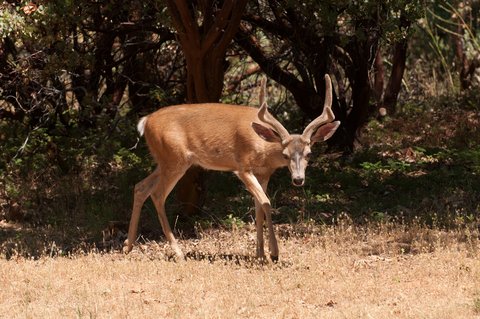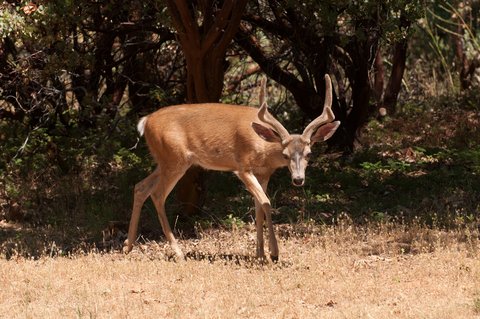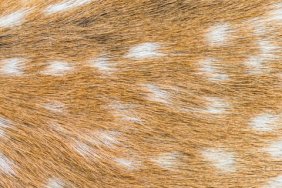
There’s a sort of unwritten law that states that if you’re using a call for blacktail deer, you’re just waisting your time. To tell you the truth, I don’t know the validity of that statement, considering the sheer difficulty of hunting these elusive critters in general.
I grew up with the idea of cover calls like using a turkey call when you’re stalking and you make some noise. The deer think it’s a turkey stirring up the bushes. It seems to be effective. I have also rattled for blacktail. But again, I can’t be sure that my success is in any way contributed to calling. Eight out of 10 guys will tell you it doesn’t work, but there is one fellow that would argue. His name is Dan Kloer and he’s been effectively using calls for blacktail for 25 years. I got pretty excited when I heard that calling is especially effective during the early part of archery season—and, it opens up in under a month. Here’s some of Dan’s strategies.
If you’re familiar with blacktail, you know how elusive they are. If you see them at all, they are apt to be on the edge of a clearcut. They bed in the thick timber behind the clearcut and come out to feed in the morning or evening. Now one thing Dan does that surprised me was to use a decoy and place it up near the edge of that clearcut. He uses a piece of cloth on the tail to get a little movement when the breeze kicks up. Using a combination of bleats and fawn calls, he is able to attract some does. What attracts the bucks is just that (the does) and not necessarily the actual calls.
Now here’s the clincher, Dan says that the biggest mistake people make is not waiting long enough. Patience is crucial in deer hunting and getting there early with a plan is a good idea. I have stalked a single deer for over four hours and spent countless hours in the pitch black waiting until shoot time. Patience also gives you a chance to observe what’s going on around you. So, Dan’s suggestion is to give it at least 45 minutes to an hour since many times the bucks take their time responding to a call. Whitetails are much more aggressive when it comes to breeding. For some reason, it’s the opposite with blacktail.
Rattling and grunting calls are usually used later in the season as the rut approaches. Dan has a keen understanding for the language of deer. His 30 years of experience enables him to create, or recreate their dialect. He starts with some general “herd talk” which is basically an exchange between does and fawns. He does some fawn bleats followed by a typical doe response. Then, somewhere in the midst of the talk, he starts lightly rattling. He continues rattling quietly and then comes in with a louder grunt.
Unlike whitetails that are very aggressive when in confrontation, blacktails tend to shove each other around more. Making loud rattles and grunts most likely won’t be effective and may actually scare the bucks away. Once again, Dan emphasizes the need for patience. He says that it is best to slow way down. His method is a light rattle/grunt sequence every 15 minutes. It is important to remember that blacktail take their sweet time in responding so if you don’t have an hour or more to wait, you’d be better off back at the camp eating bacon. I’ve never tried this method and can’t wait till opening archery season. Hope you give it a try too!








